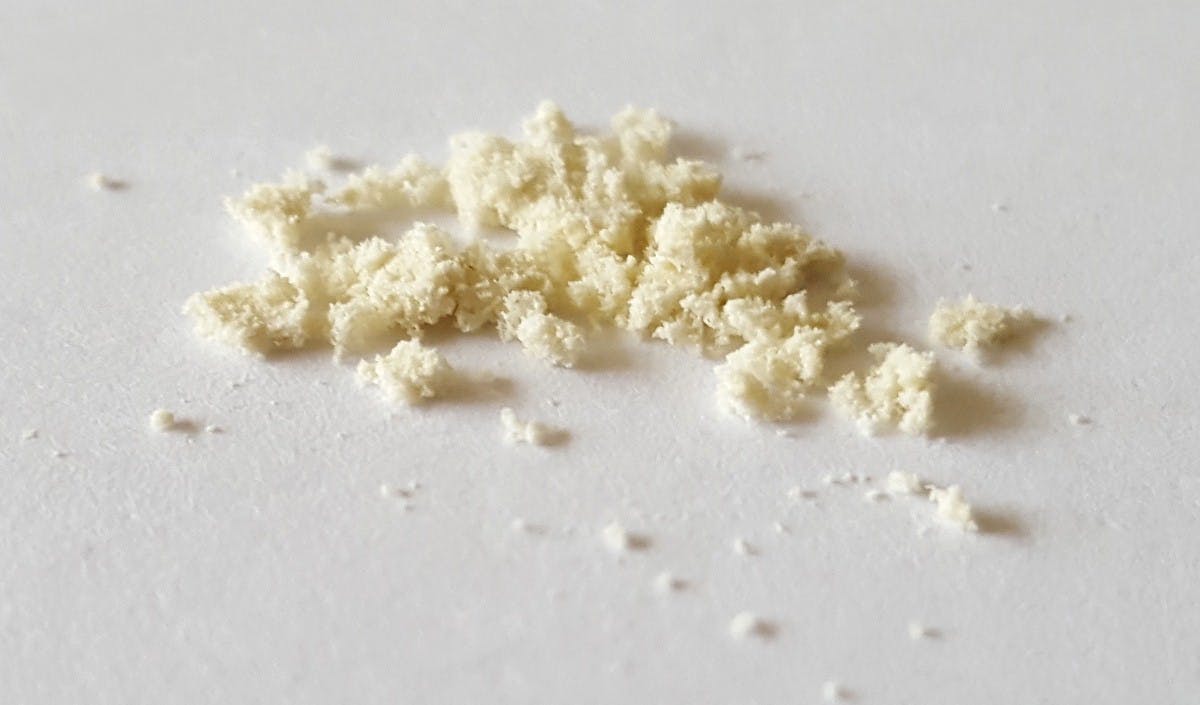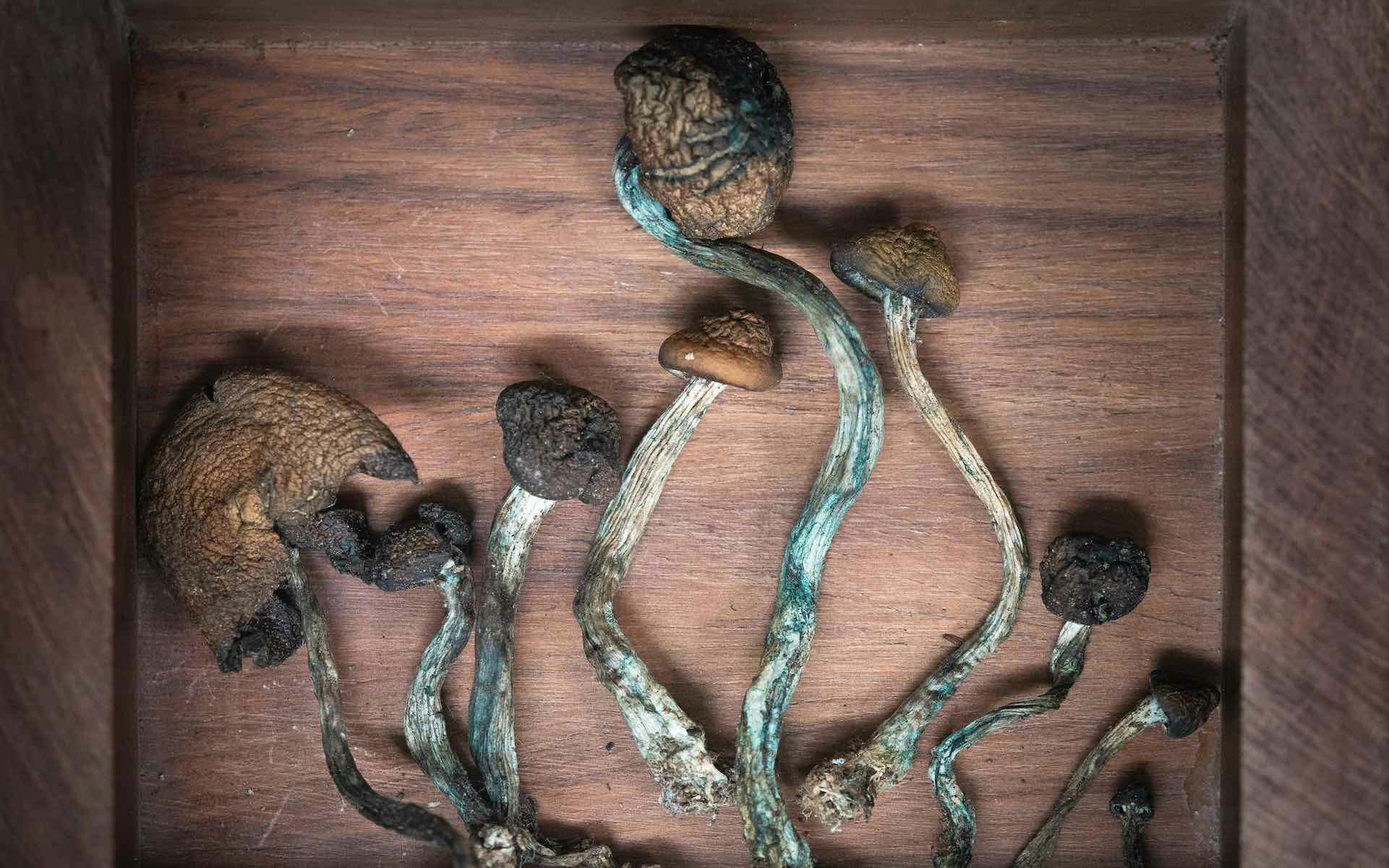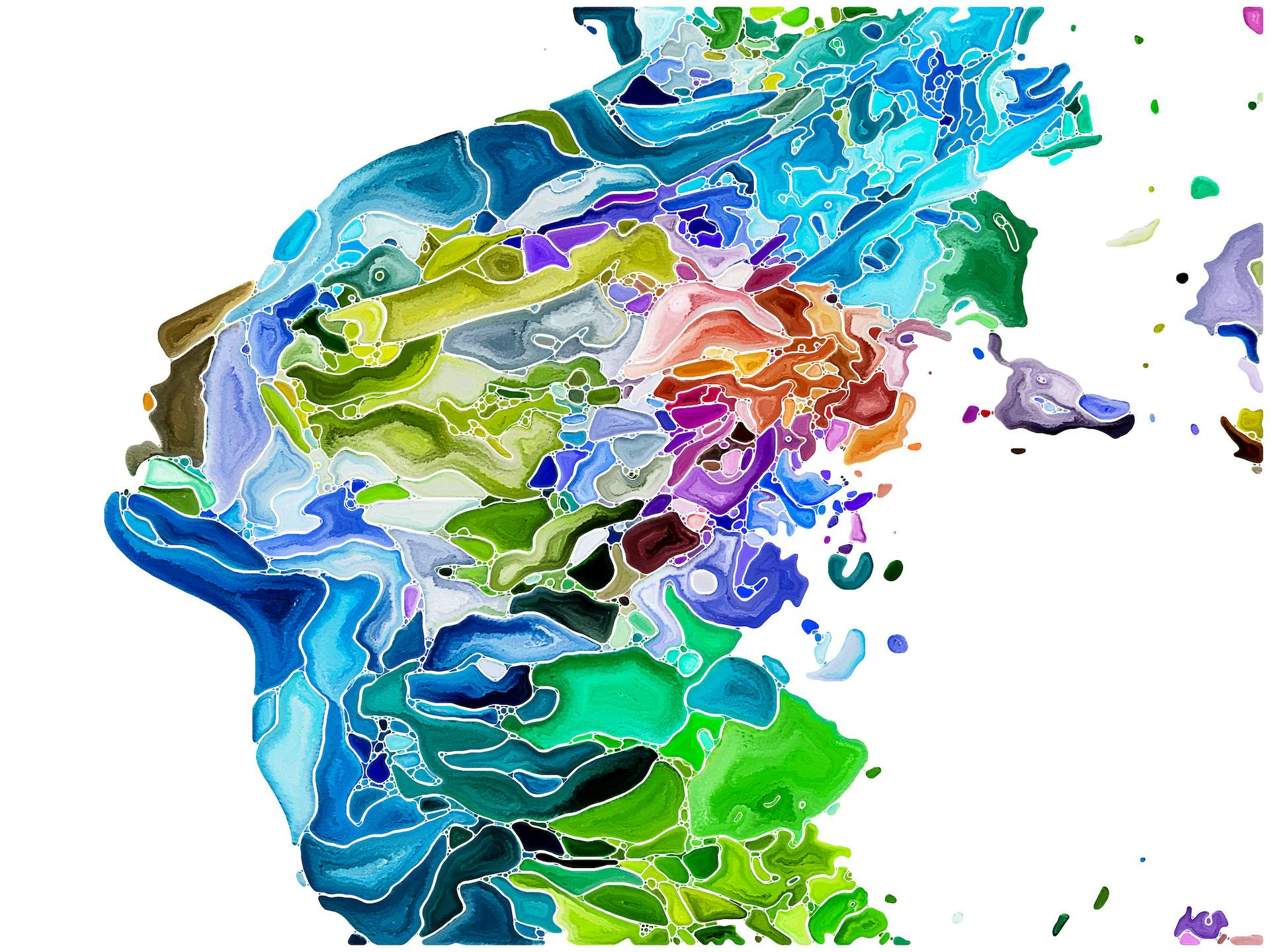Written by Emma Stone

Psychedelics take you on a journey, but ayahuasca, a brew also known as yagé, takes you on a journey like no other. Administered by a shaman in a setting infused with sacred smoke and magical medicinal songs (icaros), the ayahuasca ceremony is as integral to the experience as the brew itself.
Ayahuasca finds its roots in the Quechuan words aya, meaning “spirit,” “dead body,” or “ancestor,” and huasca, meaning “vine.” Pre-Columbian drawings etched in rock hint that the brew has been used for hundreds of years.
This “vine of the spirit” offers insights into the self, understanding and healing from mental illness and trauma, journeys to other dimensions, encounters with otherworldly beings, and most potently, experiences of ego death.
What is ayahuasca?
Ayahuasca is a psychotropic tea typically brewed from two Amazonian plants: a woody vine (Banisteriopsis caapi) and the leaves of the chacruna plant Psychotria viridis, or sometimes Diplopterys cabrerana. While the woody vine and chacruna plant form the foundation of the brew, there’s no fixed ayahuasca recipe—more than 100 different plants can be added to the decoction.
Its name comes from the Quechua, the indigenous people of South America who speak the Quechuan language or dialect. Many Quechua people live, or lived, in regions close to the Amazon where the plants used to make ayahuasca grow.
What is unique about ayahuasca is that combining these two Amazonian plants triggers a powerful response in the body. P. viridis and D. cabrerana are both sources of DMT (dimethyltryptamine), a potent psychedelic compound that delivers a super intense trip, lasting about 15-20 minutes. Learn more about DMT here.
Like many other psychedelic compounds, DMT has a strong affinity for serotonin receptors in the brain. Other receptors, like the sigma-1 receptor, may also play a role in its hallucinogenic effects.
“They say if you hear about ayahuasca more than three times, then it’s calling you… Don’t be afraid, it’s something super special.”
Mike “Zappy” Zapolin, Chief Visionary Officer, Psycheceutical, and film director
However, unlike other psychedelics, DMT is not orally active. For DMT to be activated it must be combined with a MAOI, or monoamine oxidase inhibitor. Serendipitously, MAOIs are present in the B. caapi vine used in ayahuasca and they inhibit the breakdown of DMT in the gut, allowing DMT to gradually reach psychoactive levels in the brain over 4-6 hours—rather than in a quick 20-minute blast. The perfect synergy of these two Amazonian plants creates a psychedelic journey that’s distinctive to ayahuasca alone.
“DMT is like the best parts of ayahuasca—but you’re not doing any of the work, so there’s not much to hold onto,” said Mike “Zappy” Zapolin, Chief Visionary Officer of Psycheceutical and director of The Reality of Truth, a documentary exploring spirituality and plant medicine.
“With ayahuasca, you’re in that state for hours, you do a lot of work, you remember a lot, you bring it back, and you can make changes in your life,” he said. “There are only one or two things I’ve managed to remember and bring back from DMT to use in my life.”
Zapolin also adds that it’s critical to experience ayahuasca in the right place and with the right mindset. “It’s much better to go into any ayahuasca or psychedelic experience thinking, ‘I’m not looking for answers, just to expand my consciousness and not take anything too seriously,’” he said.
But he also cautions that ayahuasca is a powerful catalyst. “It’s super important, more so than most psychedelics, to be supervised and have a shaman helping you with set and setting to get you in the right place. Don’t just buy some on the internet and try to brew it up.”
How does ayahuasca feel?
The power of ayahuasca perhaps lies in its ability to elicit a spectrum of emotions and physical sensations. Violent purging—read: vomiting and diarrhea—can be a common prelude to the psychedelic journey, kicking in about thirty minutes after drinking the tea.
But this visceral aspect of the ayahuasca experience isn’t necessarily negative. Purging is believed to expel troubling, stagnant, or negative emotions and purify the body for the visions or hallucinations that will come.
Those who have journeyed with ayahuasca experience emotions ranging from terror to bliss and report physical experiences such as elevated blood pressure, a racing heart, and dizziness. Paranoia and extreme vulnerability can often feature in the early stages of the trip.
All trips are unique to the individual, but many also experience an altered sense of time and space and encounters with nature spirits, trees, and otherworldly beings.
For Zapolin, the presence of a nurturing feminine spirit has been a common element in all of his ayahuasca journeys.
“The feminine spirit is what’s most apparent with ayahuasca,” he said. “At some point you’re going to get to a place where you feel yourself in the presence of Pachamama, or Mother Ayahuasca—a feminine spirit that feels like God-consciousness.”
The presence of the feminine energy has helped him through the experience of ego death.
“I felt this push-pull to go into it, to surrender to it. If the feminine presence wasn’t there during the ego death moment, I don’t know if you would be able to handle it,” he said. “There’s a certain surrender you have to do to get through, but some people fight it at that point. They fight it and it gets harder… until eventually they have to surrender.”
The benefits of ayahuasca
A robust body of research suggests that ayahuasca could represent a potent plant medicine for various disorders—or “diseases of civilization,” as one article puts it. Evidence suggests ayahuasca could treat disorders such as alcoholism and other addictions, anxiety and depression, and PTSD, among others.
Many people also choose to journey with ayahuasca to gain greater insight into themselves, their lives or gain a new perspective on existence.
The role of the shaman in the ayahuasca ceremony
The depth of ayahuasca rests on the experience of the ceremony as much as the brew itself. The shaman, or ayahuasquero, who administers the brew, holds space for everyone participating in the ceremony.
“The shaman is responsible for creating the energetic container of the ceremony, ensuring the physical, emotional, and spiritual well-being of those participating,” said Laura Vogels, an actress who has participated in ten ayahuasca ceremonies. “But it’s deeper than that: The rituals infuse the ceremony with a sacredness that leads it to being more than the sum of its parts.”
Such a view resonates with the importance of set and setting in psychedelic medicine.
Vogels adds that each shaman brings different cultural practices that can influence the journey. “I’ve noticed that different lineages, rituals and belief systems impact not just the energy of the ceremony but also the lessons learned, and how these lessons show up during the ceremony,” said Vogels.
For Vogels, a ceremony led by a Shipibo shaman from the Peruvian Amazon led to encounters with a Jaguar spirit, snakes, and a cosmic teacher. In contrast, a ceremony guided by a European shaman resulted in meetings with Mary Magdalene, dragons, and Valkyries.
Zapolin notes that the shamans draw on certain rituals during the ceremony to help everyone as they journey. “The shaman helps to get people through the tough parts of the journey, whether by chanting and singing to them, or blowing tobacco, or brushing them down with feathers to get them to tune into another frequency,” he said.
These rites are infused with meaning but also hold a function. Tobacco is a purgative plant, its smoke used in a ceremony to help to expel what is causing an imbalance. In addition, the sacred medicinal songs, or icaros, may help to facilitate certain states of consciousness during the ayahuasca experience.
Certain cleansing and protective rituals are sometimes invoked in the days leading up to the ayahuasca journey. Participants in the ceremony must follow strict diets, abstaining from certain foods like meats, aged cheeses, alcohol, and dairy.
There’s a symbolic aspect to abstinence, but there are also protective benefits—when ayahuasca is consumed, the MAO-inhibiting effect of the vine allows DMT to enter the bloodstream, along with other potentially harmful chemicals present in certain foods, alcohol, and drugs. Abstinence in the days before acts as a preventative measure to protect the body and render the experience safer.
Read more of Leafly’s guide to psychedelics
- Psychedelic medicine: How psychedelics can help
- How do psychedelics work?
- The history of psychedelics
- Which psychedelic drugs are legal?
- Is cannabis a psychedelic?
- How ego death can improve mental health
- Types of psychedelics
- MDMA
- LSD
- Mushrooms
- DMT
- Ketamine
- Ayahuasca
- How to dose psychedelic mushrooms
- Magic mushrooms and acid: What are the differences?
- Smoking weed with psychedelic mushrooms
By providing us with your email address, you agree to Leafly's Terms of Service and Privacy Policy.



